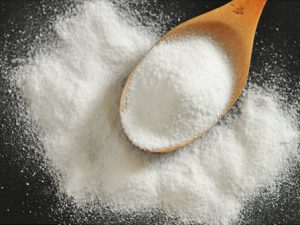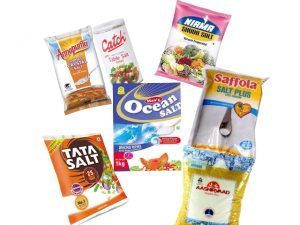An Ode to Natural Salt
Major salt manufacturers sell purified salt containing artificial elements in the name of iodine deficiency. And the natural salt has become the immediate victim.

Salt has been inextricably linked to numerous human civilizations from time immemorial. History tells us that salt was used as a part of Egyptian religious offerings and a valuable trade item. In ancient times, salt was literally worth its weight in gold, as African and European explorers would trade an ounce of salt for an ounce of gold. History also tells us that Roman soldiers were paid in salt, the reason behind the origin of the word ‘salary’. Such was the significance of salt.
India also had a marked momentum during the period of freedom movement when Mahatma Gandhi led a Salt March, also known as Dandi March—a non-violent protest against the British salt monopoly.
The Indian Iodine Story
In India, despite being such an essential commodity, salt has become a matter of concern, especially after reports recently emerged questioning the quality of various salt brands being sold in the market. This is primarily because of the fact that successive governments, especially at the Centre, have allowed unscrupulous and avaricious market forces to use salt for their vested commercial interests.
In the year 1962, the National Goitre Control Programme (NGCP) was launched by the Government of India in order to provide iodized salt to the population living in goitre-prone areas like the Himalayan region. This was followed by government identifying and recommending the opening up of iodization of salt to the private sector to ensure an adequate production to meet national needs. This opened up new vistas to big Indian corporates to exploit the masses in the name of iodized salt. Then entered the salty manufacturing industry, producing vacuum salt or refined salt, which is nothing but industrial waste masquerading as edible salt. The fact is that the spectre of goitre, which occurs due to iodine deficiency, was used as an alibi by these big corporate players to market what they claim was iodine-rich salt. Dr David Brownstein, author and one of the foremost practitioners of holistic medicines, has said in his book, Iodine, Why You Need It, Why You Can’t Live Without It, that there is insufficient iodine in salt to prevent thyroid illnesses or to provide for the body’s iodine needs.
In the last few decades, for example, iodine intake has come down in the US, thanks to campaigns by prominent health bodies to contain the sodium intake to treat or prevent high BP.
And the quality of the much-trumpeted iodized table salt leaves much to be desired. RTI replies have shown that the Food Safety and Standards Authority of India (FSSAI), at no point of time, has tested the salt sold for human consumption in India. What is appalling is the fact that they find no need for the same.
Also Read : Fssai Nestle Partnership A Telltale Business Affair
Another important fact is that there are plenty of other food items that are rich in iodine. Dairy products are major sources of iodine. The amount of iodine in dairy products differs according to factors such as iodine content in the cattle feed, etc. Other food items rich in iodine are yogurt, cottage cheese, shrimp, tuna, eggs, etc.

Pure Salt
The Salt Commissioners’ Organization, under the Ministry of Commerce & Industry (Department of Industrial Policy & Promotion), used to be the regulatory body for salt trade in India. That remained so until 2006, when the Salt Commissioner abdicated its responsibility of ensuring salt standards to FSSAI, giving a free hand to big corporate houses to sell vacuum salt. FSSAI, on its part, lowered the standards for edible salt to be sold in the country. And today, the situation is such that any powder/granules containing sodium and chloride are being passed off as edible salt. Accordingly, FSSAI turned a blind eye to the selling of vacuum salt, which is nothing but industrial waste derived from chemical processes.
So, what is the difference between refined and unrefined salt? Dr David Brownstein has stated that pure and unrefined sea salt contains over 80 minerals and elements—all the natural elements necessary for life. These additional minerals such as magnesium and potassium are essential for a healthy immune system. Natural salt provides two elements—sodium and chloride—which are essential for human life. Your body cannot make these elements on its own; you must get them from your diet. Natural salt is crucial for many important and critical body functions. It is an essential component of your blood plasma, lymphatic fluid, extracellular fluid and even amniotic fluid. It helps carry nutrients into and out of your cells and maintain and regulate blood pressure. It also supports healthy cell populations in your brain, which are essential for forming the protective coating known as myelin that surrounds the portion of the neuron that conducts electrical impulses as well as other vital neurological functions.
This is contrasted with refined salt or vacuum salt, which contains two major items: sodium and chloride. Refined salt, with all its minerals removed—we term it as ‘purified’—is bleached in order to accord it the white colour. Essentially, it is a lifeless product, which means that it may assure a long shelf life, but it is not good for human life! In fact, refined salt can sit on the grocery shelf forever; nothing will happen to it. Indian salt manufacturers know well that an all-white salt product will look cleaner to the consumer and, therefore, increase the prospect of sales.
It is a recognized fact world over that India has huge deposits of natural salts in its lake situated at Sambhar, Rajasthan.
The higher authorities, including the Salt Commissioner, were well aware of the fact that the salt in Sambhar Lake is far superior and healthy with rich nutrients and essential minerals.
The India government established Hindustan Salts Ltd in order to benefit from the huge deposits of natural salt deposits available in Sambhar Lake in Rajasthan. But, it is a paradox that despite the exponential increase in India’s salt production on an annual basis, Indians were systematically robbed of their right to have natural, mineral-rich salt available in abundance domestically. Instead, they have been destined to consume the so-called purified salt or vacuum salt, which is nothing but the chemical residue of industrial waste produced by leading salt manufacturing companies. The residue of the chemical process is known as industrial waste. As per the rules, the industrial waste residues have to be dumped into the deep sea. However, these industrial salt manufacturers, in cahoots with the authorities, market it as pure salt for human consumption, by declaring that the residue actually contains Sodium Chloride, as per revised standards fixed for the quality of common salt in India.
Also Read : Conflict Of Interest In Public Policy Stakeholders Demand New Law
Today, Hindustan Salts Ltd, under whose control is the salt in Sambhar Lake, is a loss-making organization. Both the parent company and its subsidiary, Sambhar Salts, are considered as BIFR-referred Company fit to be closed. While the salt manufactured and sold by this government enterprise fetches a price of about Rs 300 to500 per quintal, the private salt manufacturers are able to make an insanely huge profit by selling salt at Rs 10.00–15.00 per kg. One can only wish that this government enterprise is given sufficient freedom to exploit salt available in Sambhar Lake, which is one of the purest forms of natural salt available today.
Sambhar Lake salt contains more than 88 useful components essential for a healthy life. The salt deposits at Sambhar are so dense that they can serve entire mankind for many years to come. But sadly, Indians are forced to consume poor quality salt even as natural salt, which is available in bountiful, but it is neither marketed to the public nor are they informed about its immense benefits.
The government should ensure that Indians consume the natural, mineral-rich salt, not industrial residue masquerading as pure salt. Another thing worth mentioning is the tourism potential of Sambhar Lake. In Pakistan, the salt mines are made as tourist destination spots, bringing huge revenue for their country. India can similarly adopt the same strategy by developing the Sambhar Lake into a tourist destination and invite tourists from around the globe.
(Slider Photo: Sambar Lake, Rajasthan)
